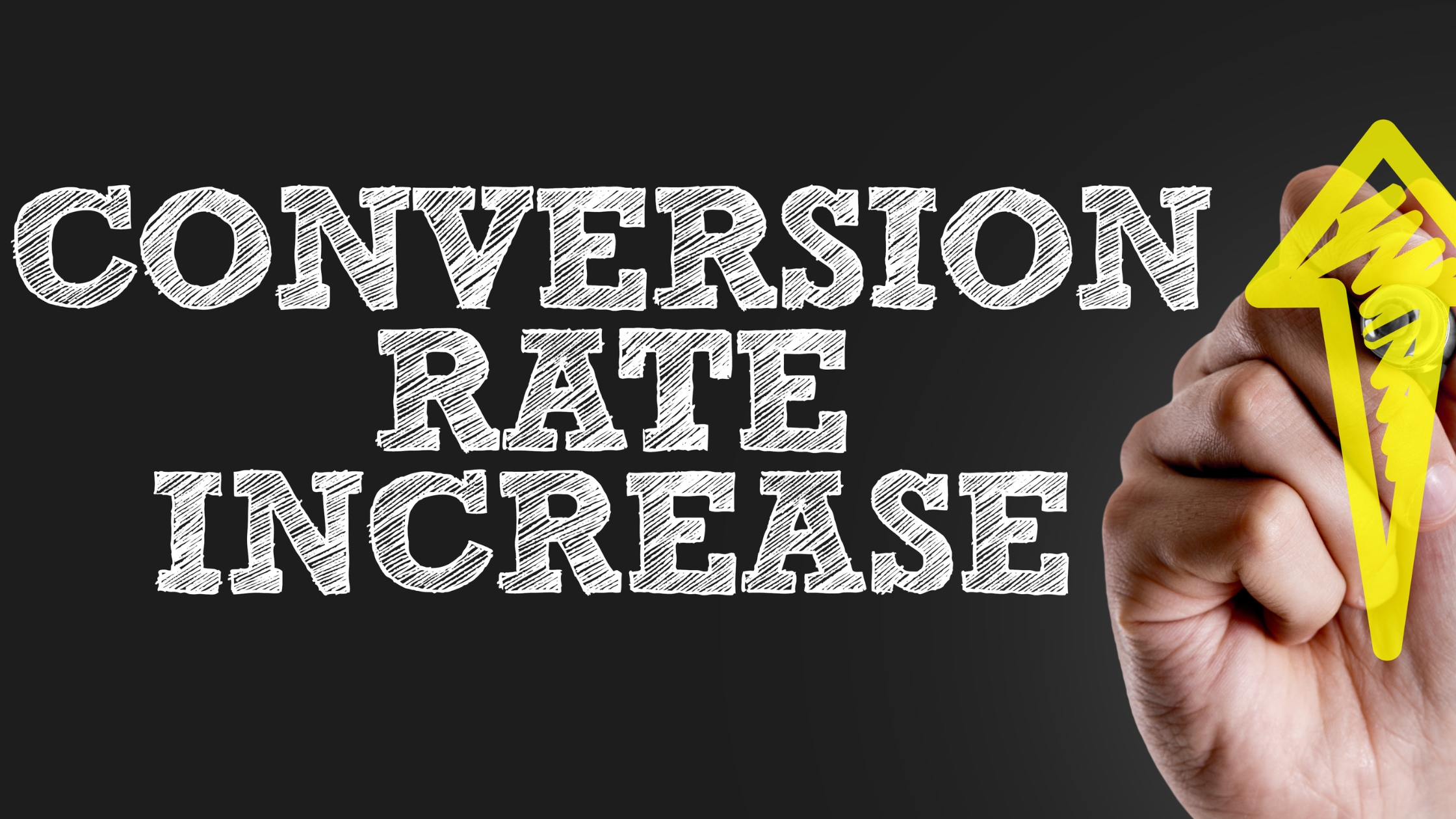How to Leverage Psychology and Drive Higher Conversions
Conversion Rate Optimization (CRO) is the process of improving the effectiveness of a website or landing page by increasing the percentage of visitors who take a desired action.
This could be making a purchase, filling out a form, subscribing to a service, or any other action that a business wants visitors to take.
 To improve your conversion rate, you must understand your website visitors’ thoughts, feelings, motivations, and behaviours. Knowing what drives them and their needs can help you optimise your website’s design, messaging, and user experience.
By doing so, visitors are more likely to feel their needs are being met, increasing the likelihood of them taking desired actions on your website, such as making a purchase or filling out a form.
This is where the power of psychology comes in.
To improve your conversion rate, you must understand your website visitors’ thoughts, feelings, motivations, and behaviours. Knowing what drives them and their needs can help you optimise your website’s design, messaging, and user experience.
By doing so, visitors are more likely to feel their needs are being met, increasing the likelihood of them taking desired actions on your website, such as making a purchase or filling out a form.
This is where the power of psychology comes in.
 Emotions play a significant role in Psychology CRO. By creating an emotional connection with visitors, businesses can increase the likelihood of conversions. This could involve using imagery and language that triggers positive emotions, such as happiness or excitement. On the other hand, businesses should avoid using language or imagery that triggers negative emotions, such as anxiety or fear.
For example:
Emotions play a significant role in Psychology CRO. By creating an emotional connection with visitors, businesses can increase the likelihood of conversions. This could involve using imagery and language that triggers positive emotions, such as happiness or excitement. On the other hand, businesses should avoid using language or imagery that triggers negative emotions, such as anxiety or fear.
For example:
 2. It takes only 90 seconds to do a product assessment and 90% of that evaluation is based on colour alone.
3. Two-thirds of the customers do not buy a needed appliance if it is not available in the colour that they want.
The psychology of colours in CTA buttons can influence a user’s perception and compel them to take action, which is known as “visual salience.” By strategically using colours on CTA buttons and website design, businesses can sway users’ perceptions and increase the likelihood of conversion. In essence, it’s about leveraging the psychological impact of colours to motivate users to buy.
2. It takes only 90 seconds to do a product assessment and 90% of that evaluation is based on colour alone.
3. Two-thirds of the customers do not buy a needed appliance if it is not available in the colour that they want.
The psychology of colours in CTA buttons can influence a user’s perception and compel them to take action, which is known as “visual salience.” By strategically using colours on CTA buttons and website design, businesses can sway users’ perceptions and increase the likelihood of conversion. In essence, it’s about leveraging the psychological impact of colours to motivate users to buy.

 The psychology of pricing is a complex subject that can have a significant impact on conversions. Consumers often perceive prices in different ways depending on how they are presented.
The anchoring effect is a psychological phenomenon in which people rely heavily on the first piece of information they receive when making a decision. In the context of CRO, businesses can take advantage of this effect by presenting information in a way that creates a sense of value for their products or services.
For instance, businesses can frame prices as discounts or present multiple pricing options, with the highest price acting as an anchor that makes the other options seem more reasonable.
However, businesses should also be mindful of how they use the anchoring effect, as it can lead to unethical practices if used to mislead or manipulate customers.
The psychology of pricing is a complex subject that can have a significant impact on conversions. Consumers often perceive prices in different ways depending on how they are presented.
The anchoring effect is a psychological phenomenon in which people rely heavily on the first piece of information they receive when making a decision. In the context of CRO, businesses can take advantage of this effect by presenting information in a way that creates a sense of value for their products or services.
For instance, businesses can frame prices as discounts or present multiple pricing options, with the highest price acting as an anchor that makes the other options seem more reasonable.
However, businesses should also be mindful of how they use the anchoring effect, as it can lead to unethical practices if used to mislead or manipulate customers.

Importance of Conversion rate Optimisation
By increasing the number of visitors who take the desired action, businesses can increase their revenue, grow their customer base and inevitably maximise their ROI. Optimising your website or landing page for conversion rate optimisation (CRO) involves more than just improving the design and layout. While it is important to make sure that the design is simple, with clear calls-to-action (CTAs) and easy navigation, other aspects should not be overlooked.What is your buyer’s purchasing journey?
In today’s competitive market, it is crucial to emphasize the psychology behind conversion rate optimisation (CRO). Essentially, what motivates a user to purchase your product or service? To effectively improve your conversion rate, it’s essential to comprehend your customer’s purchasing journey and identify any obstacles preventing them from converting.The role of Psychology
 To improve your conversion rate, you must understand your website visitors’ thoughts, feelings, motivations, and behaviours. Knowing what drives them and their needs can help you optimise your website’s design, messaging, and user experience.
By doing so, visitors are more likely to feel their needs are being met, increasing the likelihood of them taking desired actions on your website, such as making a purchase or filling out a form.
This is where the power of psychology comes in.
To improve your conversion rate, you must understand your website visitors’ thoughts, feelings, motivations, and behaviours. Knowing what drives them and their needs can help you optimise your website’s design, messaging, and user experience.
By doing so, visitors are more likely to feel their needs are being met, increasing the likelihood of them taking desired actions on your website, such as making a purchase or filling out a form.
This is where the power of psychology comes in.
Psychological Factors that Play an important role:
The Psychology of Decision-Making:
Consumers often make decisions based on emotions, rather than logic or reason. This means that businesses need to understand what drives their target audience’s decision-making process and create websites and landing pages that appeal to their emotions. By using persuasive language, social proof, and other psychological tactics, businesses can increase the likelihood of visitors taking the desired action.The Role of Emotions in CRO(Conversion rate Optimisation):
 Emotions play a significant role in Psychology CRO. By creating an emotional connection with visitors, businesses can increase the likelihood of conversions. This could involve using imagery and language that triggers positive emotions, such as happiness or excitement. On the other hand, businesses should avoid using language or imagery that triggers negative emotions, such as anxiety or fear.
For example:
Emotions play a significant role in Psychology CRO. By creating an emotional connection with visitors, businesses can increase the likelihood of conversions. This could involve using imagery and language that triggers positive emotions, such as happiness or excitement. On the other hand, businesses should avoid using language or imagery that triggers negative emotions, such as anxiety or fear.
For example:
- Urgency and scarcity: “Only 2 left in stock!” or “Limited time offer, act now!”
- Guilt or shame: “Don’t miss out on this opportunity” or “You’re missing out if you don’t buy now”
- Fear of missing out (FOMO): “Join the thousands who have already taken advantage of this offer” or “This deal won’t last forever”
- Negative consequences: “If you don’t act now, you’ll miss out on the best deal” or “If you don’t buy this product, you’ll regret it later”
The Psychology of Colors and Its Impact on Conversions:
Different colours can have a significant impact on the emotions and perceptions of visitors. For example, red is often associated with urgency and can be used to create a sense of urgency to take action. Blue, on the other hand, is often associated with trust and can be used to create a sense of trust and reliability. 1.When people buy a product, 93% of them say that colour is the biggest factor for them to choose a product. 2. It takes only 90 seconds to do a product assessment and 90% of that evaluation is based on colour alone.
3. Two-thirds of the customers do not buy a needed appliance if it is not available in the colour that they want.
The psychology of colours in CTA buttons can influence a user’s perception and compel them to take action, which is known as “visual salience.” By strategically using colours on CTA buttons and website design, businesses can sway users’ perceptions and increase the likelihood of conversion. In essence, it’s about leveraging the psychological impact of colours to motivate users to buy.
2. It takes only 90 seconds to do a product assessment and 90% of that evaluation is based on colour alone.
3. Two-thirds of the customers do not buy a needed appliance if it is not available in the colour that they want.
The psychology of colours in CTA buttons can influence a user’s perception and compel them to take action, which is known as “visual salience.” By strategically using colours on CTA buttons and website design, businesses can sway users’ perceptions and increase the likelihood of conversion. In essence, it’s about leveraging the psychological impact of colours to motivate users to buy.
The Psychology of Social Proof:
Social proof is a powerful psychological principle that can be used to increase conversions. It refers to the idea that people are more likely to do something if they see others doing it. According to Coveo(2022),“Social proof is informational social influence. It’s a psychological and social phenomenon powered by the ‘wisdom of the crowd’.” Businesses can leverage social proof to increase their credibility and showcase support for their products, by including customer reviews, testimonials from well-known figures, or social media shares on their website or landing page. In addition to increasing conversion rates,this can also boost your E-A-T (Experience, Expertise, Authority, Trust), which is a crucial ranking factor for Google.
The Psychology of Scarcity:
The psychology of scarcity is another powerful psychological principle that can be used to increase conversions. Scarcity refers to the idea that people are more likely to take action if they perceive that something is limited in quantity or time. Businesses can create a sense of scarcity by using language that emphasizes limited availability or time-sensitive offers.The Psychology of Pricing:
 The psychology of pricing is a complex subject that can have a significant impact on conversions. Consumers often perceive prices in different ways depending on how they are presented.
The anchoring effect is a psychological phenomenon in which people rely heavily on the first piece of information they receive when making a decision. In the context of CRO, businesses can take advantage of this effect by presenting information in a way that creates a sense of value for their products or services.
For instance, businesses can frame prices as discounts or present multiple pricing options, with the highest price acting as an anchor that makes the other options seem more reasonable.
However, businesses should also be mindful of how they use the anchoring effect, as it can lead to unethical practices if used to mislead or manipulate customers.
The psychology of pricing is a complex subject that can have a significant impact on conversions. Consumers often perceive prices in different ways depending on how they are presented.
The anchoring effect is a psychological phenomenon in which people rely heavily on the first piece of information they receive when making a decision. In the context of CRO, businesses can take advantage of this effect by presenting information in a way that creates a sense of value for their products or services.
For instance, businesses can frame prices as discounts or present multiple pricing options, with the highest price acting as an anchor that makes the other options seem more reasonable.
However, businesses should also be mindful of how they use the anchoring effect, as it can lead to unethical practices if used to mislead or manipulate customers.
Your Content Matters
- Have a clear unique selling proposition (USP)
- Use power words (you can find an extensive list here)
- Incorporate high-quality images (stay away from cheesy stock photos)
- Provide valuable information-according to Robert Cialdini’s principles of persuasion, reciprocity is a psychological principle that suggests that people are inclined to reciprocate when they receive something. By providing something valuable to your website visitors, whether that may be tips or advice.

A/B testing
A/B testing can help businesses determine which elements of their landing pages are working and which ones need to be optimized. For instance, you might use the principles of social proof to test different forms of social proof on your website. You might create version A with testimonials from satisfied customers and version B with the number of social media followers you have. By analyzing the results of the A/B test, you can determine which form of social proof was more effective at increasing conversions.Personalise your customer experience
Personalising the customer experience is also crucial for improving conversions. By personalising the experience, businesses can create a deeper connection with their customers, which can lead to increased loyalty and higher conversion rates. For example, you might use psychology to personalise the experience for first-time visitors to your website. By understanding the motivations of first-time visitors, you can tailor the messaging, layout, and overall experience to better meet their needs and increase the likelihood of them taking the desired action. To achieve this, businesses can use techniques such as cookies, tracking data, and machine learning algorithms to understand the past behaviours and preferences of their users. By incorporating these insights, businesses can deliver a customised and relevant experience that addresses the specific needs and interests of each user.Final words…
After taking all of the factors discussed into account, it’s clear that conversion rate optimization (CRO) involves more than just improving design and layout.
If you’re looking to increase your website’s conversion rates, it’s important to approach CRO with a holistic strategy that considers all aspects of the user experience. Don’t hesitate to reach out to us for help with implementing these strategies and achieving your conversion goals!































